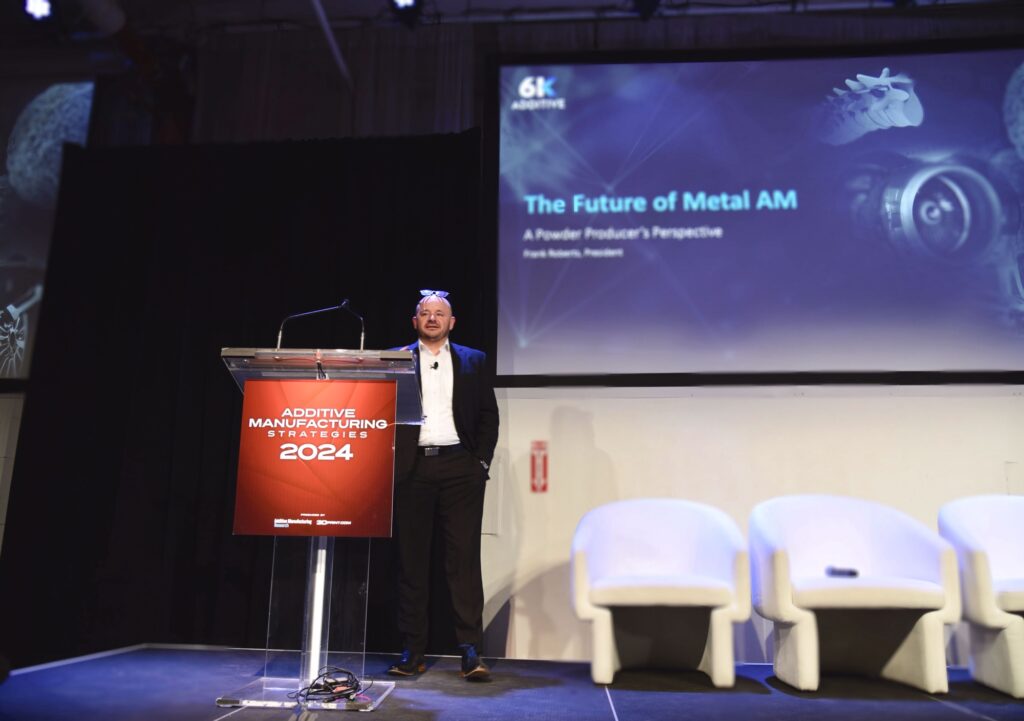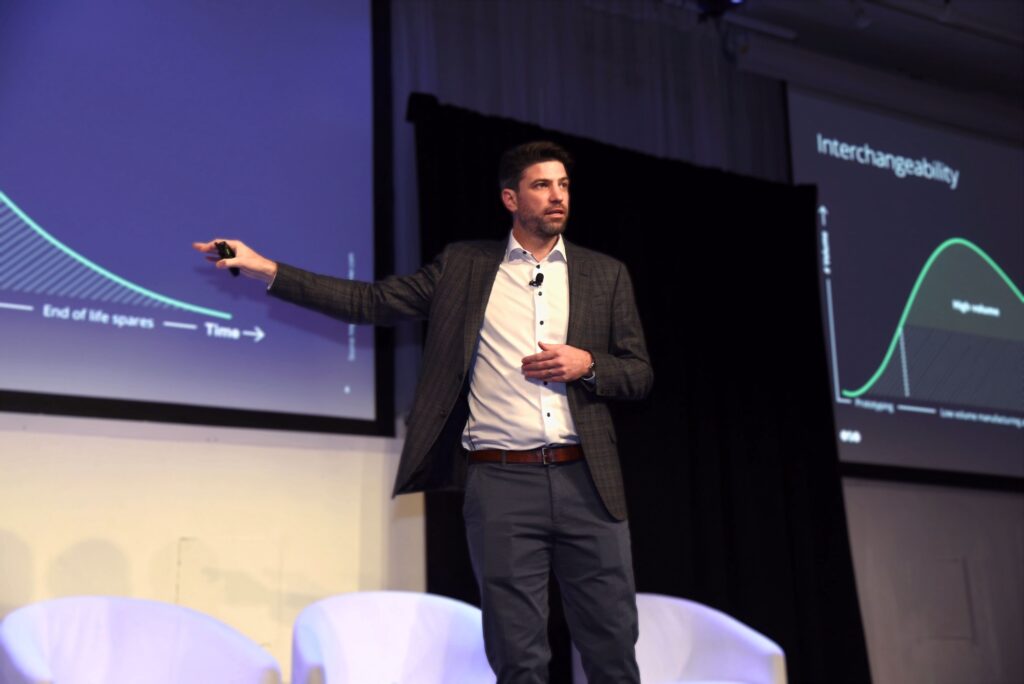Additive Manufacturing Strategies (AMS) in New York City is my favorite AM industry event. Now, I work for the company that puts on the show, so I’m sure I would say that even if it wasn’t true. However, even if I didn’t work for 3DPrint.com and Additive Manufacturing Research, I think AMS would still be my favorite event for a very simple reason: I like strategies. I think if you know what a person’s — or a company’s — strategy is, it’s the simplest way to cut through all the noise, and see right to the heart of what that person or company is trying to do.
‘Strategies’ Is a Plural Noun
To begin by making a very trivial yet significant point, the conference is not called “Additive Manufacturing Strategy,” and the last word is pluralized for a reason. An industry professional very succinctly made this same point in one of the panels on the last day: “I think it’s a red flag whenever you hear someone say that additive is just one thing.”
This is a very fitting way of summing up the whole conference: there is no single AM strategy; there are a great many AM strategies. Generally, this is one of AM’s biggest strengths: its versatility.
At the same time, that aspect can also be a source of what is easy to interpret as chaos in the sector, with the message about what’s going on in 3D printing changing with every new messenger. It is quite difficult, oftentimes, to even keep track of what technologies the industry is comprised of.

Arno Held, Managing Partner at AM Ventures, alluded to one example of this in his talk on Day 1, when he brought up the well-known problem of there being endlessly proliferating names that all refer to more or less the same single technology: “Is this clear for new entrants to this technology, when they are starting to evaluate our industry, that every manufacturer has its own term for exactly the same laser melting process? Think we can do better? I think we should.”
As I mentioned in my recap of RAPID + TCT 2023, the infinite amount of names for the same things doesn’t make the landscape clear for new entrants, and it could even be one of the main aspects putting people off who are otherwise interested in AM. So that is the extreme end of the negative side of AM’s pluralistic nature. But it is that same pluralistic nature that gives 3D printing so much promise, especially when it comes to its potential to spur innovation.
In another part of Held’s talk, he argued, “We have to think like the customer. We have to come up with the applications. We have to come up with products that cannot be designed, cannot be produced with any other manufacturing technology. And then we have to think about what is the right technology to produce each part with.”
That is the adventure for every AM company, and there is no single adventure, which is why there is no single strategy. “Think like the customer” comes close to working as a single strategy, but only because it’s able to imply a sufficiently diverse range of possibilities such that it can always be applicable.
And, throughout the conference, there were enough cases of companies thinking like the customer on display to leave anyone more than convinced that the industry is on the right track. In particular, there is one lesson that can be taken away from all those cases, which can serve as inspiration for AM strategizing.
A Good Strategy is a Responsive One
Companies that are effective at thinking like the customer will always be adapting their strategies on the fly, because the customer’s needs inevitably change. Thus, good strategies in the 3D printing industry should be responsive above all else. The AM company’s approach should not only align with the customer’s approach, but should be flexible enough to realign as the customer’s priorities change.
Frank Roberts, president of metal powders supplier 6K Additive, made a point during his presentation that is highly relevant here:
“Let’s talk about the challenges,” Roberts said. “And I really put this in three buckets. It’s thinking about supply chains, and then overall cost, and ultimately, sustainability. From a supply chain perspective, it’s all about process stability, reliability, repeatability. Some of the powders that we’re selling, the customers are always looking for batch-to-batch consistency. That continues to be the number one focus, often over lead time and cost. So, if you can produce a consistent product, and it works in the printer the same way, all-day everyday, customers are willing to pay a premium to get that.”

That is a perfect description of a responsive strategy in action. Right now, for 6K, batch consistency is the highest priority for a large number of customers, but the company still balances that priority against cost and sustainability. As consistency becomes more of a guarantee in the metal powders market as a whole, cost and sustainability will likely start to take greater priority. 6K will adapt to meet that need, and doing so will be less of a struggle for the company than it would be if it wasn’t already thinking about — and already in the habit of — balancing multiple priorities at once.
In his talk on Day 3, entitled, “Respecting the Past, Inventing the Future: Accelerating AM’s Adoption into Mainstream Production”, Dr. Greg Hayes, senior VP of Applied Technology at EOS, urged the industry to embrace “boring parts”. Hayes emphasized that this wasn’t all the industry should do. Rather, it should be something of a foot in the door for AM into a customer’s enterprise.

Once that foot is in the door, and a foundation for AM activity has been built up on that premise, AM companies can then move on to more purely design for AM objectives. This approach seems to fit quite harmoniously with the goals of probably the most significant single AM customer discussed at AMS, the US military.
During the “AM for Mobility” panel, Matthew Sermon, the US Navy’s Executive Director, Program Executive Office for Strategic Submarines, made the same point about adaptability, but from the reverse side, that of the customer:
“Quite frankly, the Navy writ-large, and how we do configuration management and how our supply system works, it must adapt to AM, not the other way around,” said Sermon. “All of those systems I mentioned aren’t used to adapting or being agile, and they absolutely must be. It’s a national security imperative. …We’re not gonna reduce our technical rigor and quality, we’re gonna adapt it to what we have to do for AM to drive towards fundamental material maturity to get some parts on submarines and on surface vessels.”
By making its strategy responsive, the Navy has greatly accelerated its AM deployment over the last couple of years, which has only been enabled by the mutual responsiveness of its own suppliers. The more AM capacity that the Navy builds up, the more freedom its suppliers will have in the future to continuously reinvent what the Navy does with AM.
And that should really be the ultimate objective for everyone in the industry: to put oneself in the best possible position to help the world of manufacturing perpetually reinvent itself.
Thinking Like as Many Customers as Possible
Thus, the industry needs to stop punishing itself for whatever it perceives as its own past sins, because it can move past the past simply by embracing its greatest existing strengths — strengths which couldn’t have flourished in the first place, of course, without the industry’s messy origins. AMS illustrated that everything the industry needs in order to continue moving forward already exists within the industry, itself, and most of that lies in the demand signals coming from the AM customer base.
The most logical way to drive collaboration, then, would be for trade associations to form based on the needs of the customers. The 3D Printing in Auto Repair Task Force is an ideal in-progress example of this, and Mobility goes Additive is an excellent existing one. Once formed, all of the organizations could presumably exist as part of the AM Coalition. In other words, this wouldn’t be an either/or thing, but an and/and/and thing.
That is how the industry can evolve in a way that allows as many of its professionals as possible to think adeptly about the needs of as many of its customers as possible. If the industry moves in that direction, acting strategically can become second nature.
Images courtesy of Ashley Alleyne of 3DPrint.com.
Subscribe to Our Email Newsletter
Stay up-to-date on all the latest news from the 3D printing industry and receive information and offers from third party vendors.
You May Also Like
3D Printed Heat Spreader Could Improve Efficiency of Electronics
The low-hanging fruit for decarbonization has long been improving the efficiency of existing systems, hence the justification for LED lights and ENERGY STAR certified appliances. While such minor moves are...
3D Printing News Unpeeled: Marine Gearboxes, 3D Printed Motors and $1.7 Million in Seed Funding
UK based Equipmake just released their Ampere-220 e-axle system. The system, which is meant for high performance electric cars, was similar to one released on the Ariel HIPERCAR. It has...
CEAD Unveils 36-Meter-Long 3D Printer for Abu Dhabi’s Al Seer Marine
CEAD, a Dutch original equipment manufacturer dedicated to large-format 3D printers, has unveiled what it claims to be the world’s largest robotic arm-based 3D printer. At 36 meters long and...
3D Printed Biocomposites Could Help Reduce Marine Plastic Pollution
Concerns about the impact of plastic litter and microplastics in the oceans are at the forefront of environmental study. For decades, the marine environment has suffered from the degradation of...




































